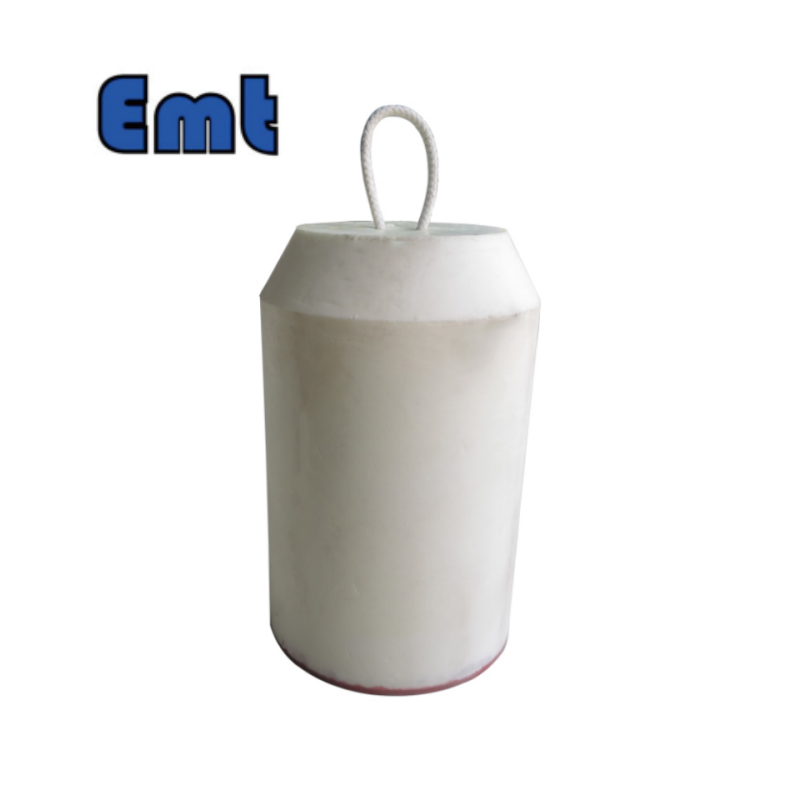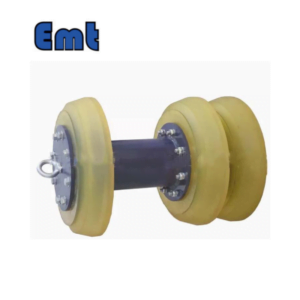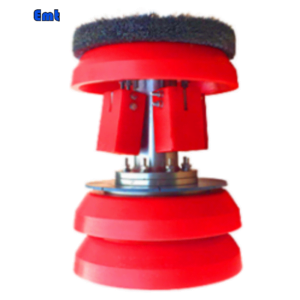Description
The definition of pipeline foam pig
This pipeline foam pig has better sealing performance, resulting in a pressure difference between the front and back of the pig, pushing the pig forward. There are spiral grooves or round holes around the pig to ensure that the body is filled with fluid without being crushed. The pig with spiral grooves generates a component force during operation, which makes it rotate forward, so the pig wears evenly. The plastic foam pig has the characteristics of strong rebound ability, good guiding performance, and high deformation ability. It can smoothly pass through the deformed elbow, tee, and reducer. It is especially suitable for cleaning the pipe with an inner coating, but its strength is not as high as the brush pig.

The function of foam pig
Natural gas pipeline in operation: remove water, light oil, methane hydrate, iron oxide, carbide dust, carbon disulfide, hydrosulfuric acid, and other corrosive substances inside the pipeline; Reduce the corrosion damage of corrosive substances to the inner wall of the pipeline; Re-define the pipeline direction; Detection of pipeline deformation; Check the integrity rate of valves along the line; Reduce working back pressure.
Crude oil pipeline in operation: pigging before detection in the pipeline, intermittent operation of pipeline pigging at low throughput; Remove the condensate, wax, and scale inside the pipeline to reduce the oil back pressure, reduce the friction, and reduce the oil temperature.
Chemical materials and edible oil pipelines: clean the pipelines of cohesive materials; Separate different pipe transport media to achieve single pipe multi-product transport, metering pipe transport media.
Sectional pigging pressure test: Remove pipeline sundry, floating rust, drainage, and exhaust.
Total pass pigging pressure test: test pipeline deformation and construction quality. Exhaust before the hydrostatic test, drainage before production, drying, and medium isolation.
Use the method of foam pig

The sending and receiving process
1. Serve the ball
Make sure that the pressure inside the ball barrel is zero before serving, then open the quick-opening blind plate, put the pigging ball into the service barrel, and cover the quick-opening blind plate.
Develop the ball device front control valve, slowly open the service device back control valve, and pay attention to the ball indicator and pressure changes.
When the ball indicator indicates that the ball has departed the ball barrel, open the outbound valve.
Record the ball time, and pressure and notify the receiver to get ready to receive the ball.
Close the front and back control valves of the service device, open the blowdown valve of the ball receiving cylinder, remove the tube cap and open the cleaning valve, access the compressor air, discharge the residual liquid in the cylinder, and clean the service cylinder.
Close the blowdown valve and cleaning valve, open the quick-opening blind plate, clean the inside and outside of the cylinder, close and lock the quick-opening blind plate, and reset the ball-through indicator.
2. Collect the ball
Prepare to collect the pigging ball according to its operation.
Slowly open the front and rear control valves of the ball-receiving device, slightly close the inlet valve, and pay attention to the ball-receiving indicator and pressure changes.
When the ball receiving indicator indicates that the ball is entering the ball receiving cylinder, fully open the inlet valve and close the front and rear control valves of the ball receiving device.
Open the ball collecting drum blowdown valve, remove the cap and open the cleaning valve, access the compressor air, discharge the residual liquid in the pipe, and clean the ball collecting drum.
Close the blowdown valve and cleaning valve, then open the quick-opening blind plate and take out the pig ball.
Clean the inside and outside of the cylinder, close and lock the quick-opening blind plate, and reset the ball-through indicator.

Applicable condition
The radius of curvature of the elbow:
R≥1.5D(Nominal diameter of pipeline≥150)
R≥2.5D(Nominal diameter of pipeline≤100)
Pipe deformation: D≤20%
Medium temperature:-40℃≤T≤90℃
Equal diameter tee should be equipped with baffle ball grate;
Fewer accessories or diameters on the pipeline;
The main line shall adopt full-pass valves:
Metal and non-metal pipelines that can bear pressure;
The classification of foam pig
The pipeline foam pig can be divided into coated foam pig and uncoated foam pig.
The fully coated foam pig is made of polyurethane coated outside the foam core, which is widely used.
Features: large deformation, light and soft, not easy to jam in the pipeline, conducive to removing thick and hard scale.
Mainly used for regular water removal in gas pipelines and pigging before pipeline operation; It is used for experimental balling when the internal condition of the pipeline is unknown.
The uncoated foam pig has no polyurethane elastomer coating at the point where the foam meets the inner wall, and only the polyurethane elastomer is poured at the tail. Used to absorb the inner wall of the pipeline water, dry the pipeline, and test the cleanliness of the pipeline. A wire brush can also be attached to the exterior to increase its cleaning capacity, and can also be applied topically.
pipeline foam pig





Reviews
There are no reviews yet.